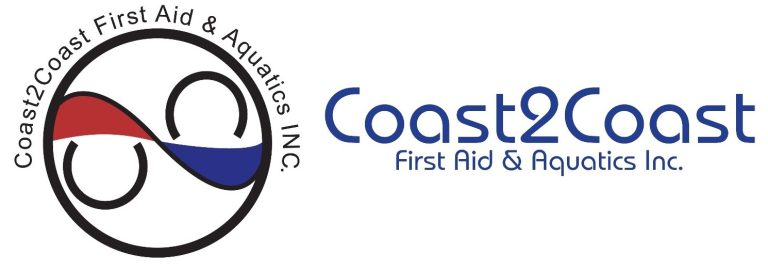Cardiopulmonary resuscitation, or CPR, is a critical life-saving procedure used to help someone in a medical emergency. However, it isn’t easy to administer CPR properly and follow the proper steps without the right training.
When a person is unresponsive and has stopped breathing, or their heart has stopped beating, the rapid chest compressions used in CPR can help to save their life. These compressions mimic the heart’s beating, allowing blood to flow to the person’s vital organs until paramedics arrive.
Why Learn CPR?
A person in medical distress who has no heartbeat or cannot breathe will die within minutes unless they receive help. Even if you have called for emergency responders, chances are they will not survive if you do not administer CPR quickly enough.
Your CPR training can help minimize the damaging effects of their condition and increase their chances of survival.
Therefore, CPR protects victims of cardiac emergencies, drownings, choking, etc. from brain death, and increases their survival and recovery rates.
Both adults and children can learn how to perform CPR and use an AED, making it easier for them to respond to emergencies at home, in their school, community, or workplace.
Know the CPR Steps
Sometimes, even after training, someone can forget the steps required, especially if they don’t practice them often. Therefore, the Canadian Red Cross provides this guide to make it easier to remember. You can also print the guide to keep it near you at home, at work, in your car, or your bag, in case you need to refer to it.
- Always check the scene to ensure it’s safe, followed by a quick survey of the situation to gain a first impression. If available, use personal protective equipment (PPE).
- If the scene is safe, check the person (primary assessment)
- Confirm their responsiveness by shouting, clapping and tapping on the person’s shoulders
- Use the ABC method you learned in your CPR course. Check their airway, check for breathing and look for any life-threatening bleeding or other life-threatening conditions.
- If the person does not respond and is not breathing or gasping, CALL 9-1-1 and get an AED if you are alone. If you are not alone, ask someone else to call 9-1-1 and get an AED
- Gently move the person on their back, laying them on a firm, flat surface.
- Start the CPR by giving 30 chest compressions. Remember the following:
- Center your two hands on their chest (for infants, you use two or three fingers)
- Keep your shoulders directly over your hands and your elbows locked
- The depth of the compressions is at least 2 inches for adults, ⅓ of the chest’s depth for children and infants
- The compression rate of 100 to 120 per minute remains the same for babies and adults
- Allow the chest to return to the normal position after each compression
- Follow the compressions with two breaths after opening the airway with a head tilt and chin lift. Each breath must last about 1 second, making the chest rise
- Note: If you notice that the first breath does not cause the chest to rise, tilt the head again, ensuring that you seal the nose and mouth properly before performing the second breath. If, again, you notice that the second breath does not make the chest rise, something may be blocking the airway. Complete 30 chest compressions then check the mouth for an obstruction. If you see an object, carefully remove it.
- Continue the set pattern of 30 chest compressions and 2 breaths until EMS arrives
- If you have an AED on hand, you can use it – follow the written or audio instructions
Inquire about CPR Training
Do you have questions regarding CPR training? Contact us today! Our customer service representatives are ready to assist you.
Getting CPR Certification
Depending on whether you want Level A or Level C certification, once you learn CPR, you can apply your skills in several situations. Besides learning to perform chest compressions and breathing for resuscitation, you also learn how to use an AED. At Coast2Coast, we provide Canadian Red Cross CPR training, and our programs are WSIB approved. Certificates remain valid for three years; renewal is essential to maintain your skills and practice.Choosing Between CPR Level A or Level C
If you spend a lot of time with infants and children or your work demands it, Level C training provides essential knowledge on dealing with them. However, once you have completed Level C, you will have the skills and expertise to apply CPR to anyone, regardless of age.
In-Class or Blended Learning?
You can choose in-class or online blended training for Level A and Level C CPR training.
In-class training takes five hours for Level A and six hours for Level C. For the online blended courses, you can expect to complete up to two hours of online learning for Level A and three hours for Level C certification. The in-class sections of the course take 3 and 4 hours, respectively.
The content for both courses follows the same format, but Level C also provides added CPR and choking techniques for infants and children.
CPR/AED Course Content
Circulation emergencies form the main context of CPR/AED training. However, besides learning how to treat heart attack, stroke, drowning, and choking victims, CPR/AED training also emphasizes the importance of lowering the risk of infections and how to assist victims experiencing life-threatening internal and external bleeding.
The course content includes:
Level A
- The Red Cross
- The role of the First Aider
- Chain of Survival Behaviours
- Lowering the risk of infection
- The Check, Call, and Care Protocol
- Recovery position
- Dealing with shock
- Adult choking
- Assisting with medication
- Angina and Heart Attack
- Stroke
- CPR/AED-Adult
- Compress-Only CPR
- Life-threatening External Bleeding
- Life-threatening Internal Bleeding
Level C
Level C CPR/AED has all the above content and includes:
- Choking in infants and children
- CPR/AED for infants and children
Organize Your CPR/AED Training
Find your nearest Coast2Coast location and register for the CPR/AED training suitable to your workplace or general interest. Our step-by-step registration guide can help you complete your registration.
With your CPR training and certification, you can make your home, work, and community safer by offering assistance to anyone suffering a cardiac emergency. Your skills and knowledge will ensure you follow the correct steps without hesitation, ensuring the victim has a better chance of recovery.





















